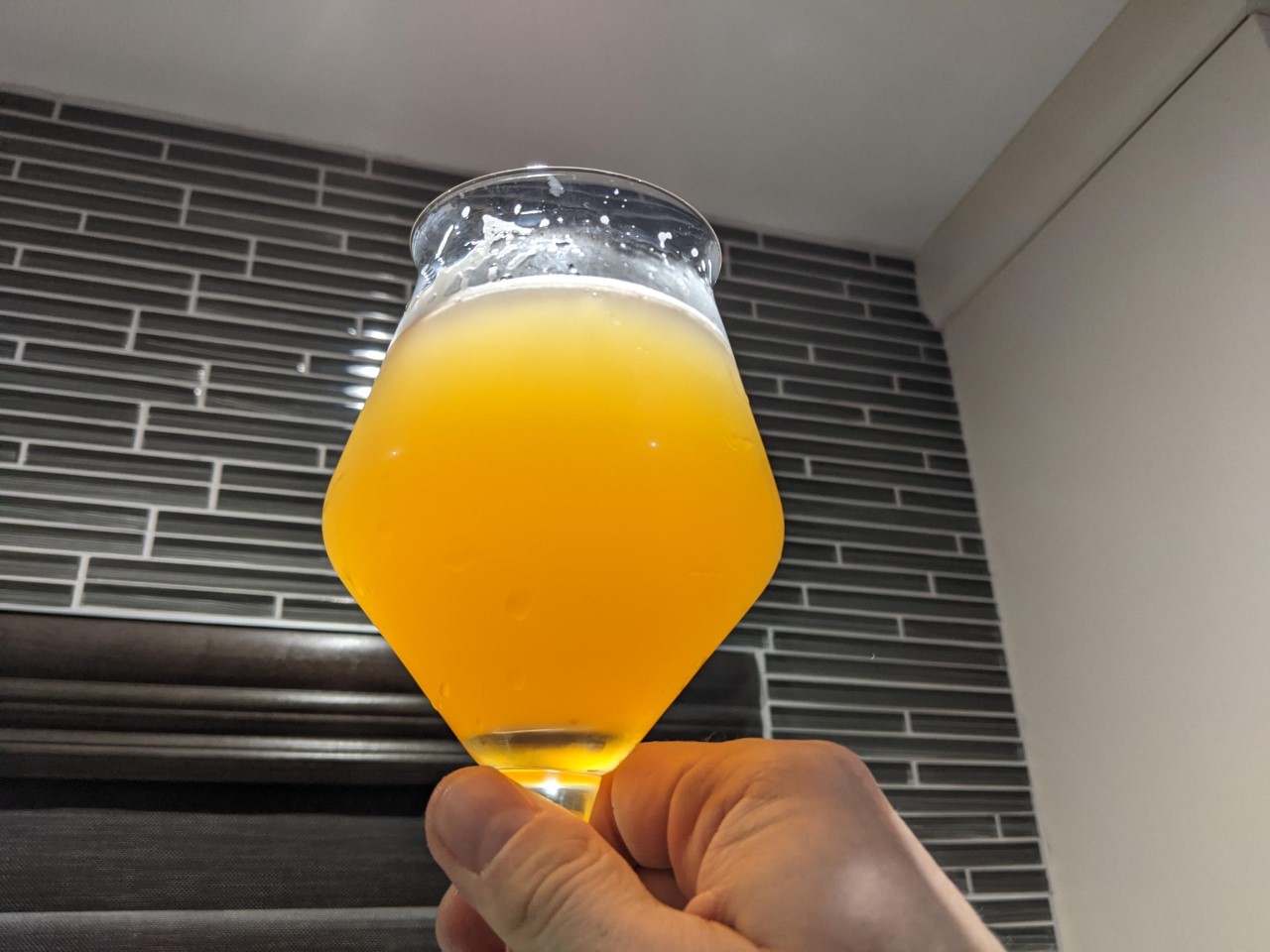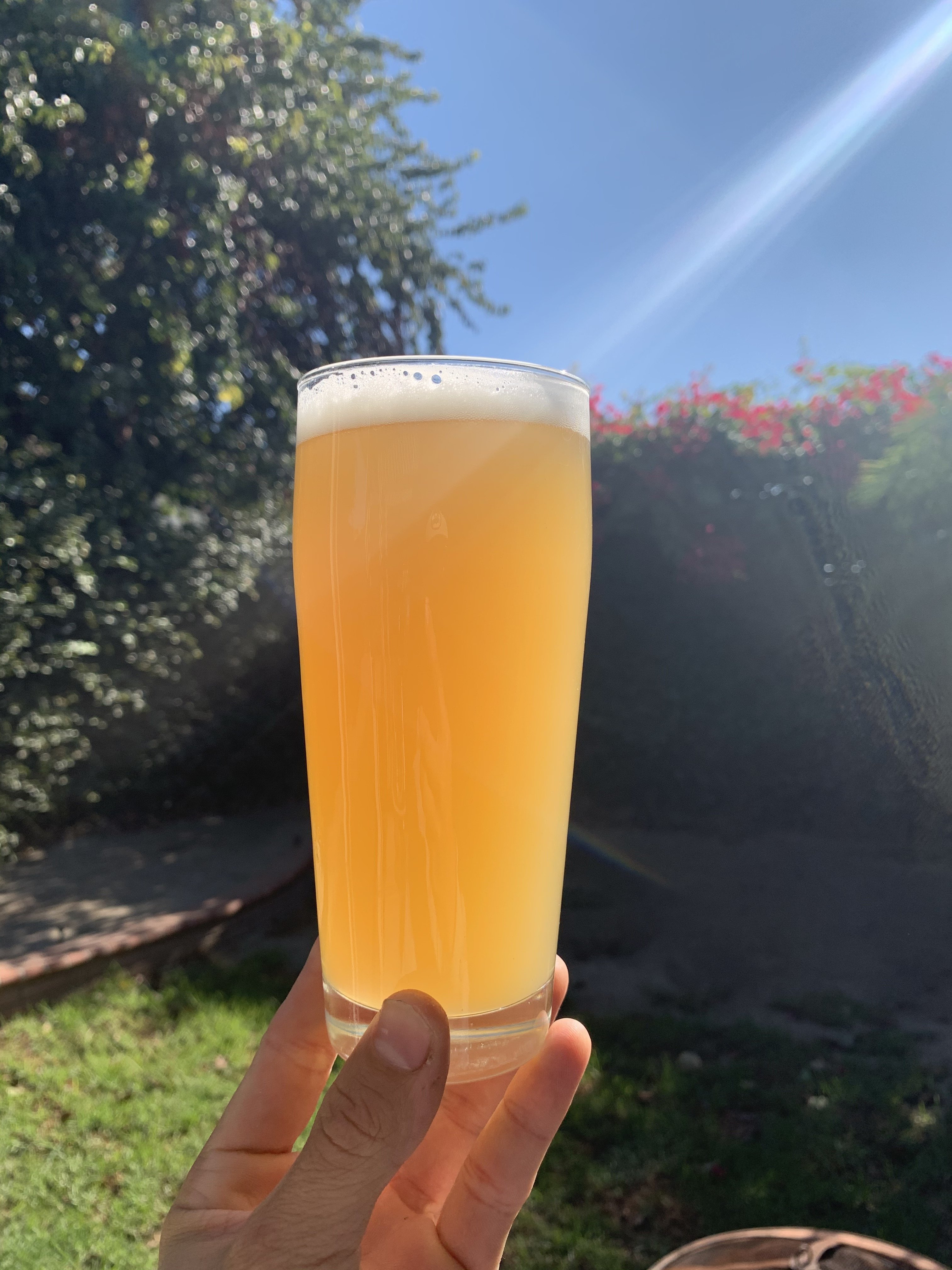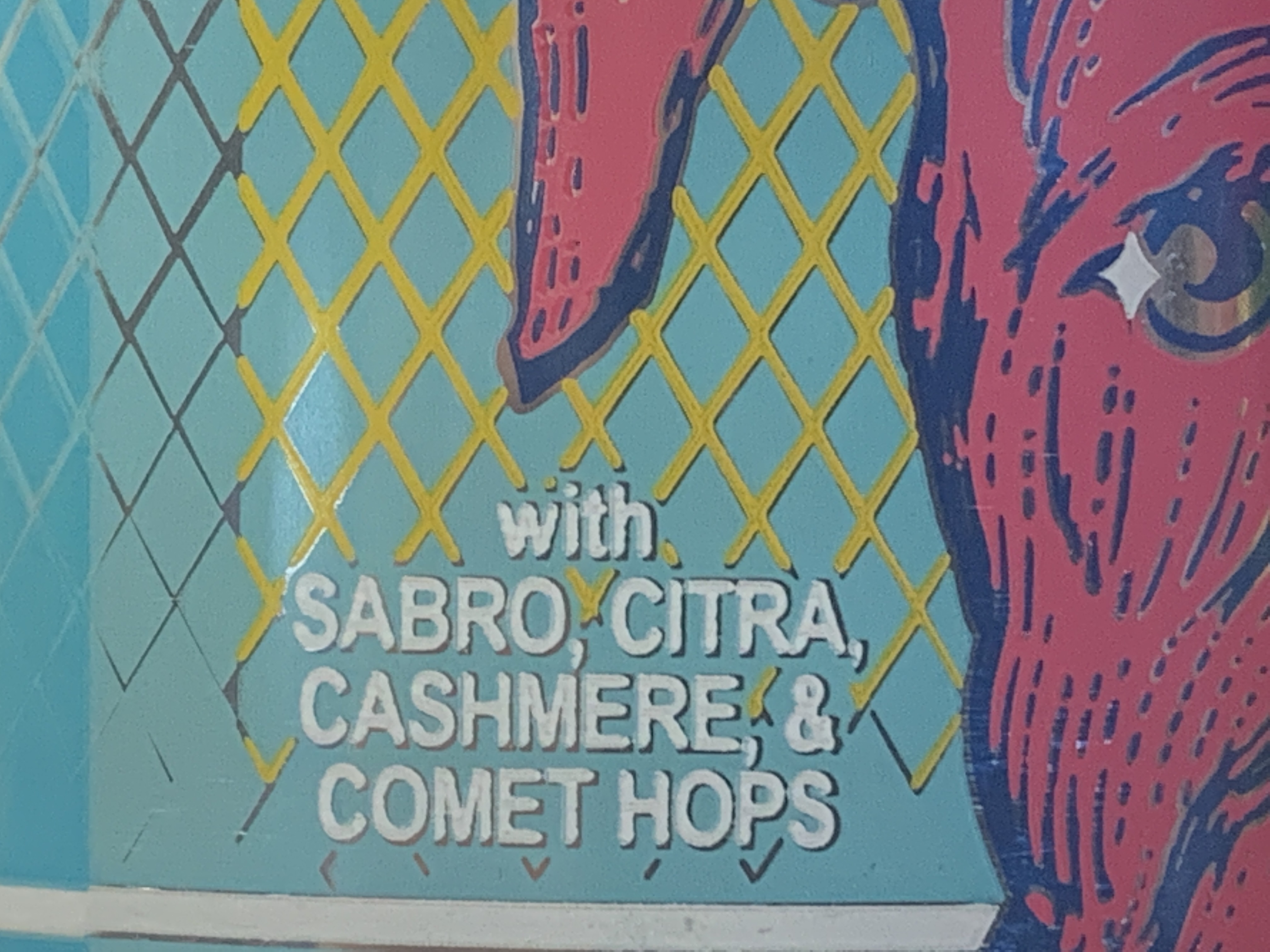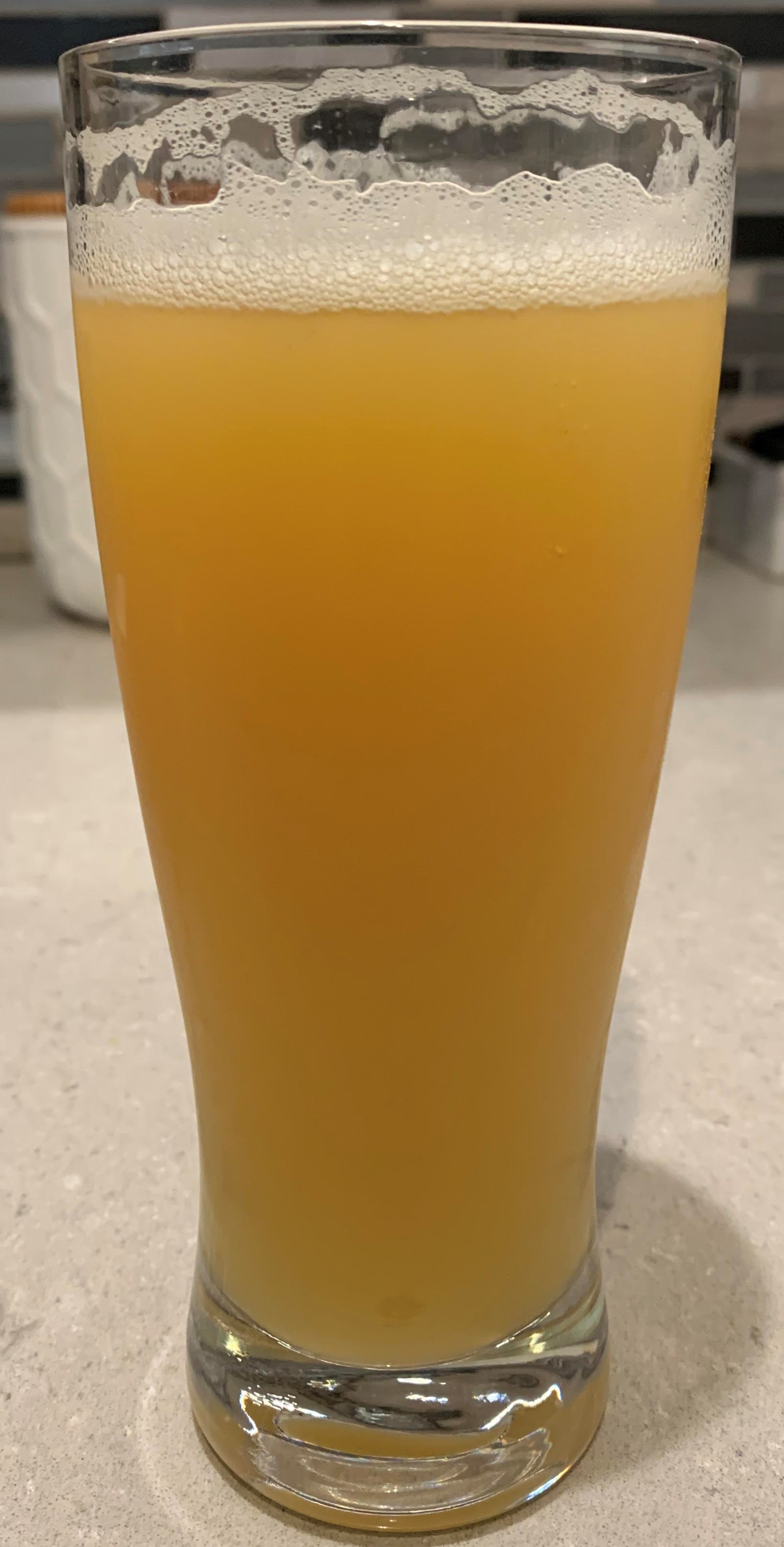I made an NEIPA with 30% oats. It came out way better then I expected.
Oat NEIPA
New England IPA
6.2% / 15.2 °P
All Grain
Anvil Foundry 6.5 Gallon
72% efficiency
Batch Volume:
3 gal
Boil Time:
60 min
Mash Water:
4.44 gal
Total Water:
4.44 gal
Boil Volume:
3.99 gal
Pre-Boil Gravity:
1.053
Vitals
Original Gravity:
1.062
Final Gravity:
1.015
IBU (Tinseth):
24
Color:
4.7 SRM
Mash
Strike Temp —
159.8 °F
Temperature —
153 °F —
60 min
Malts (7 lb 4 oz)
4 lb 14.9 oz (63.6%) — Viking Malt 2-Row Xtra Pale Malt — Grain — 1.8 °L
11.6 oz (9.4%) — Simpsons Oats Golden Naked — Grain — 7.3 °L
11.6 oz (9.4%) — Simpsons Oats Malted — Grain — 1.7 °L
11.6 oz (9.4%) — Oats, Flaked — Grain — 1.3 °L
2.3 oz (1.9%) — Weyermann Acidulated — Grain — 1.9 °L
Other (8 oz)
8 oz (6.5%) — Briess Rice Hulls — Adjunct — 0 °L
Hops (5.99 oz)
1 oz (10 IBU) — BRU-1 15.7% — Aroma —
20 min hopstand
1 oz (6 IBU) — Centennial 10% — Aroma —
20 min hopstand
1 oz (9 IBU) — Columbus/Tomahawk/Zeus (CTZ) 13.7% — Aroma —
20 min hopstand
1 oz — BRU-1 15.7% — Dry Hop —
3 days
1 oz — Citra 12.7% — Dry Hop —
3 days
1 oz — Simcoe 13.2% — Dry Hop —
3 days
Hopstand at
170.6 °F
Miscs
4.7 g — Calcium Chloride (CaCl2) —
Mash
1.6 g — Epsom Salt (MgSO4) —
Mash
1.7 g — Gypsum (CaSO4) —
Mash
0.5 items — Whirlfloc —
Boil —
10 min
1 g — Yeast Nutrients —
Boil —
10 min
Yeast
1 pkg — Omega
OYL-004 West Coast Ale I 76.5%
1.4 L starter
4.87 oz DME / 5.93 oz LME
100 billion cells overbuild: 0.5 L (36%)
Pitch Amount: 0.9 L
280 billion yeast cells
1.05 million cells / ml / °P
Fermentation
Primary —
68 °F —
12 days
Carbonation:
2.4 CO2-vol
Water Profile
Ca 101 Mg 9 Na 8 Cl 139 SO 94











































![Craft A Brew - Safale S-04 Dry Yeast - Fermentis - English Ale Dry Yeast - For English and American Ales and Hard Apple Ciders - Ingredients for Home Brewing - Beer Making Supplies - [1 Pack]](https://m.media-amazon.com/images/I/41fVGNh6JfL._SL500_.jpg)




















